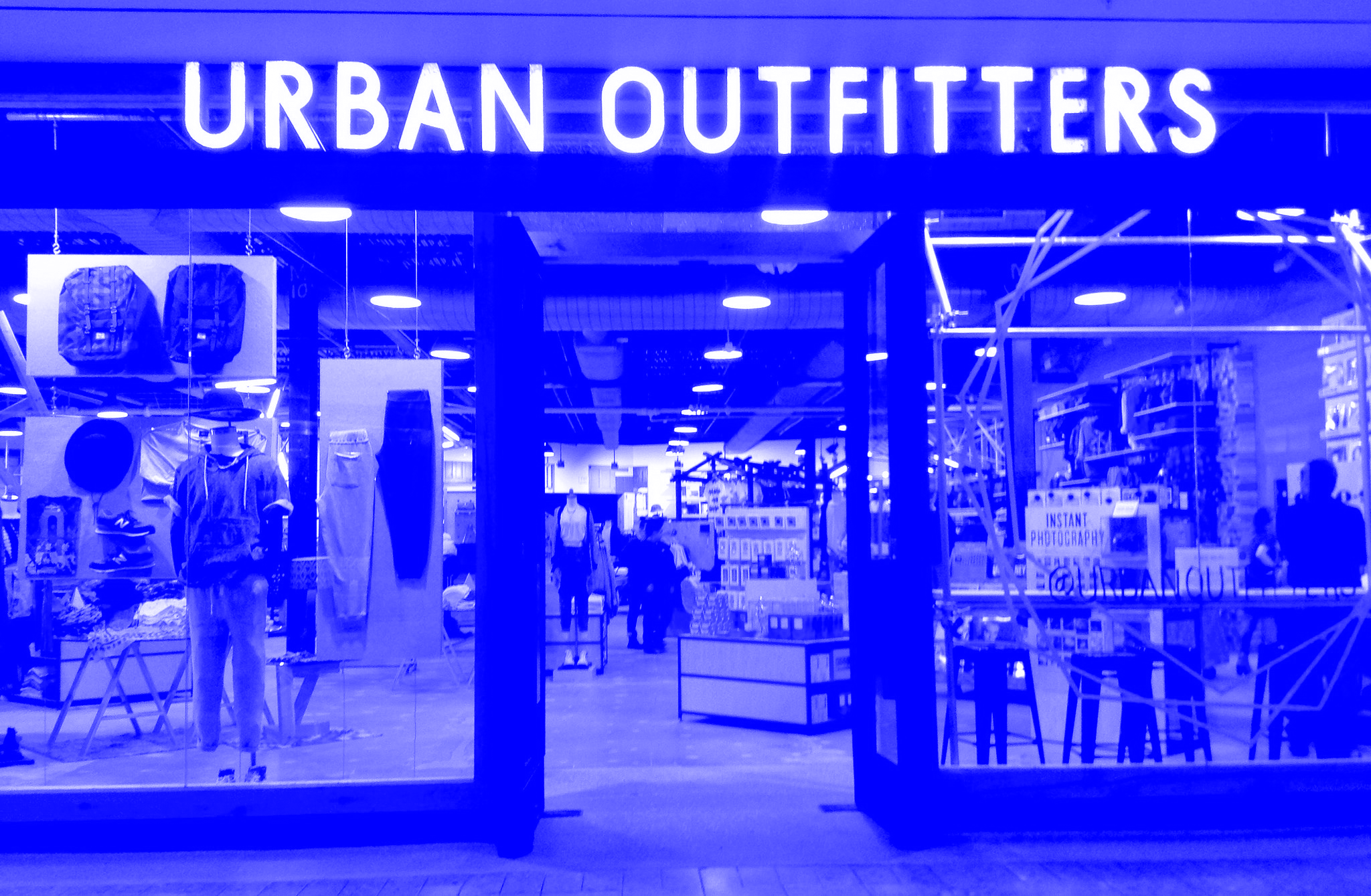F*** Urban Outfitters
What is lost, what is disappearing, is secrecy. Everything has to be rendered visible. Nothing exists unless it’s hyper-visible.” – Jean Baudrillard.
If anything is to define the last decade of the twentieth century and the new millennium it’s nostalgia.
History is supposed to be dead – at least the history we were taught, the history we were sure of. That kind of history was written by the winners for the winners.
The alternative histories, the ones told by the losers, were deemed irrelevant and unimportant to the grander narratives – like the great nineteenth century, nationalist projects. These were the great nation-building days of Bismarck, the Habsburgs and King George V, history was something to be embraced like a confident, reassuring handshake from your father.
This was the way it was and this is the way it shall be. Yet, this imperial hubris itself reflected a crisis in the legitimacy of their regimes as new identities, styles and expressions of culture emerged in politics and the arts.
Today, it feels that all we really have are alternative histories. It’s coldly ironic that in an age of mass global communication, society has become more fractured and people more historically isolated than, perhaps, ever before.
Every episode in history, which once could have embodied your entire country’s being, can be syndicated for television and consumed by the insatiable culture machine, the mass media. 'Real' history, the type that built nations, the type that meant so much has just become another commodity – all historical events are equal in that they’re plastic and disposable.
Instead of one clear narrative, the fabric of our collective heritage has been blasted apart by wave after wave of philosophical iconoclasts and capitalised on by everyone. There are so many interconnecting strands to our experience, past and present, that devoid of essential meaning, everything has become a sort of commodity – even our own individual experiences.
The current flux of nostalgia, then, must be a reaction to this historical breakdown.
When ‘objective’ accounts of history become obsolete and every event is downgraded to nothing but a quantum variable, where can anyone turn for meaning? Surely the only direction is inward.
Nostalgia, then, is the expression of a subtle kind of existential crisis. In order for people to prove ourselves to ourselves and establish identity, we naturally begin to refer to ourselves, to our personal history.
It’s possible to trace this shift through art. Modernist art has veered away from the hubristic, all-encompassing theories of the Bauhaus, Suprematism or De Stijl to a more introspective method of self-referral. Modern art, now, is characterised by unscrupulous references to itself through an inaccessible bricolage of nearly untranslatable signs and signifiers. It has tended to be art talking to art for its own sake.
There’s no certainty of meaning, just individual interpretation which is, in itself, dependent on each individual’s experiences and memories.
This recent compulsion to always justify your own existence through external signs may have begun with the compulsion of art to represent reality on its own terms, because it has encountered its own crisis, but people now appear to be doing the same thing through their lifestyles.
People are beginning to define themselves in terms of objects, commodities, experiences and memories more than before, collective or otherwise. In this sense, we’ve truly entered the reality of the sign; people don’t seem so content to foster memories as actualities, we have to own something to prove it to ourselves that we were there – or not, as the case may be.
Of course, other cultural artefacts from the television and the movies serve as a slightly different kind of currency.
These are the kind of memories we have that we’re certain of: Saturdays spent watching The A-Team, Tuesdays spent watching MacGyver and the Crystal Maze or weekdays wasted watching Ulysses 31 and Thundercats. Instead of identifying ourselves with our nations’ past histories, we’re much more content talking about things which really did form us.
Conversely, this brand of alternative, individual history, in all its solipsism, has generated a whole culture that is much more open to discussing things that really meant something then and means something now – who are willing to involve themselves in animated discourse. Who says we have to talk about politics all the time?
Quite simply, people are turning away from grand history as a primary form of identification and meaning to these alternative histories mediated through commodities and the culture industry, including advertising. The serendipitous meetings of millions of histories are coming to mean much more to young people than any seminal theory of scholars Jacob Bronowski, E. H. Gombrich or Isaiah Berlin.
The process of proving yourself is as much a personal matter as it is interpersonal.
Those late night, animated conversations about who was can play Face in a new A-Team movie (true story) is an example of a natural instinct: to prove yourself to yourself through dialogue – through other people.
As much as historical certainty is a subjective matter, we’ll never fully relinquish our instinct to insist we’re right even if infinite diversity has generated latent indifference to most things.
Whatever happens, we’re going to stand up for what we believe in because that’s who we are, or who we convince ourselves we are.
This was written for the now defunct cultural Irish criticism website Monkeybomb.com, which I co-founded (before blogs existed).
